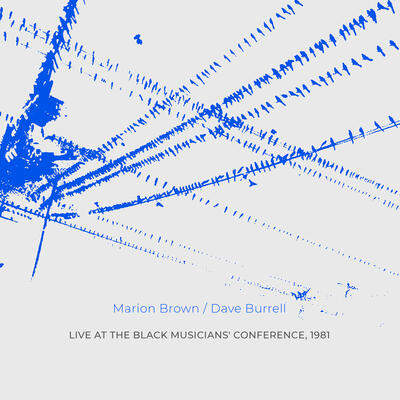Featuring: Dave Burrell | Marion Brown
Marion Brown - alto saxophone
Dave Burrell - piano
| 1. Gossip / Fortunado | 17:57 |
| 2. La Placita | 8:36 |
| 3. My Little Brown Book | 6:19 |
| 4. Punaluu Peter | 16:08 |
| 5. Pua Mae ’Ole | 5:33 |
| 6. Crucifacado | 10:22 |
| 7. Lush Life | 10:13 |
Robert Iannapollo - Cadence Magazine
Alto saxophonist Marion Brown and pianist Dave Burrell were complimentary figures. Both emerged in the second wave of players who were following in the wake of the Coltrane-Coleman-Taylor axis of “new Jazz” (Brown was on the scene a few years earlier). Both could engage in free improvisation that could build to pitch intensity when called upon to do so. But both also had a deep, abiding respect and affection for jazz’ history. Although Brown’s alto sound had a contemporary harder edge to it, one could hear the influence of Johnny Hodges in Brown’s more lyrical forays. As for Burrell he could easily whip up a group frenzy with Taylor-like barrages. But he could also show off his more historical influences such as stride piano. Both sides were evident on the first album recorded under Burrell’s name, High with the free jazz blowout “East Side Colors’’ with Sunny Murray on drums followed by the stride-centric “Margy Pargy” aka “A.M. Rag”). Brown was nine years older than Burrell and, in a sense, he took Burrell under his wing. Burrell’s first recording was as a member of Brown’s group on the album Juba-Lee (1966). And they renewed their relationship on and off over the ensuing decades. In 1981 Brown was supposed to play a duet with pianist Hilton Ruiz at the Black Musician’s Conference at U Mass., Amherst. When at the last-minute Ruiz had to cancel, Brown called Burrell and he was there. One would expect this to be a bit messy, happening in such short order. But in 1979, Burrell toured Japan as part of Brown’s quartet and they performed duo segments as part of their sets. But listening to the first moments of this disc, one gets the impression they just picked up where they left off two years ago and they were off. The set consists of three Brown compositions, three of Burrell’s and two by Billy Strayhorn (a favorite of both). What’s evident is the affection that each has for the other’s compositions. On the opening medley of “Gossip / Fortunado” (two of Brown’s) after a long solo from Burrell during the “Gossip” portion, one can hear him edging closer to “Fortunado” and when he hits it, he plays the chords with such affection. It’s a marvelous moment. Brown is clearly fond of Burrell, the composer, as well. He has a way of caressing the melody line of “Pua Mae‘Ole” that is among the most striking playing this listener has ever heard from Brown. Another facet of this disc is that it offers the listener the opportunity to hear the Burrell compositions from his opera Windward Passages (“Punaluu Peter” and “Pua Mar Ole”) expanded to the duo format. At the time of this recording they had only been available in solo interpretations.
It’s fortunate that this session was unearthed and released. It brings to light music that forms an important part in both players’ discographies. It’s 75 minutes of superb duet music of the highest order.
